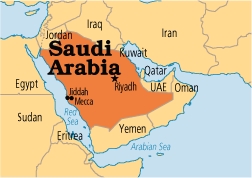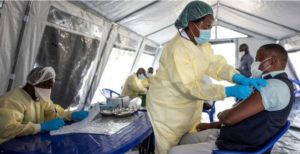Saudi Arabia to invest SR33.5 billion in tourism

Riyadh : The Kingdom of Saudi Arabia will see a steady growth in its travel and tourism industry with almost SR33.5 billion to be invested in the sector until 2020, this was according to experts who attended the recently concluded Saudi Arabia Briefing of the Arabian Hotel Investment Conference (AHIC) in Riyadh.
Hosted by Marriott International, the event in Saudi followed similar briefings in key tourism markets across the region, such as Oman and Qatar. In Riyadh, experts gathered to discuss the prospects of Saudi Arabia’s travel and tourism sector as well as analyze the trends that will have an impact on its ability to attract more tourists.
Data from the World Trade and Tourism Council show travel and tourism investments in Saudi Arabia have grown at a CAGR of 5.8 percent since 2001 and are estimated to have reached SR20.55 billion at year-end 2012. It is expected to increase at an annual rate of 6.7 percent to reach SR33.5 billion of total investments in 2020.
The investments reflect a strong commitment to Saudi’s tourism and travel industry, which has been contributing significantly to the country’s GDP, accounting for as much as 6.1 percent of overall GDP by 2017.
Philip Wooller, Area Director – Middle East & Africa, STR Global, says there are about 66,438 rooms that are in constriction in the Middle East and Africa region. Majority of these are classified as Upscale (32 percent) and Upper Midscale (22 percent).
“Among the region’s key markets, Dubai reported the largest number of rooms under construction (10,970 rooms). Five other markets reported more than 2,000 rooms under construction: Makkah, Saudi Arabia (6,927 rooms); Riyadh, Saudi Arabia (5,804 rooms); Doha, Qatar (4,944 rooms); Abu Dhabi, United Arab Emirates (3,036 rooms); and Jeddah, Saudi Arabia (2,569 rooms),” he added.
Looking ahead, Filippo Sona, Director, Head of Hotels MENA, Colliers International reviewed what has changed in Saudi Arabia’s hospitality sector and gave some significant insights into where it is headed.
In conversation with Saad Al Qahtni, Section Head Accommodation, SCTA; and Otto Goessnitzer, Licensing & Quality Consultant, SCTA, Sona noted the potential for growth using the Serviced Apartment Business Model whose key strength is being able to change the target market profile between long and short stay to suit market conditions in order to achieve revenue maximization.
“Brand strength is a strong driver of serviced apartment demand with GDS, direct bookings, and hotel website bookings accounting for 40 percent of total bookings. A strong brand with a regional presence and strong online capabilities is essential to help and drive sales in all three markets,” Sona explained.
In Saudi Arabia, according to Sona, there is a definitive gap between locally branded furnished apartment supply and internationally branded serviced apartments stemming from inconsistent service standards, poor construction standards, and a lack of ancillary facilities. “While some markets have a large amount of forthcoming stock, other markets including Makkah and Madinah have limited stock in the pipeline. 2014 will see the introduction of many new internationally branded serviced apartments concepts such as Fraser Place and Fraser Suites in Riyadh, two Citadines properties in Jeddah and a Residence Inn in Jazan,” he continued.
The current demand for furnished apartments stems almost exclusively from Saudi Nationals. The SCTA has estimated that approximately 89 percent of overall demand in KSA for furnished apartment units stems from the local market, which is a direct consequence of the lack of internationally branded supply. Given existing market conditions and forthcoming supply, Colliers’ econometric model has indicated that there is scope for a further 6,495 units over and above the forthcoming supply across the Kingdom of Saudi Arabia between 2013 and 2017. The primary scope for development of these units is in the province of Makkah, which contains the two key cities of Makkah and Jeddah.
The briefing ended with a panel discussion led by Sona including Yasir Abu Sulayman, Head of Structured Finance, The National Commercial Bank; Badr Al Badr, Chief Executive Officer, Saudi Hotels & Resorts co. SHARACO; and Alex Kyriakidis, President & Managing Director, Middle East &Africa, Marriott International dissected development trends from KSA’s hotel industry trends from the perspective of owners, operators and lenders.
AHIC, now going into its tenth year, has proven to be the meeting place for the Middle East’s most influential hotel investors, developers, operators and advisors. Organised by Bench Events and MEED, the travel and tourism industry’s premier event connects business leaders from international and local markets to do deals across the region and acts as the industry’s annual intelligence update. It is scheduled to take place on May 4-5, 2014 at the Madinat Jumeirah in Dubai. Source: saudigazette.com.sa















